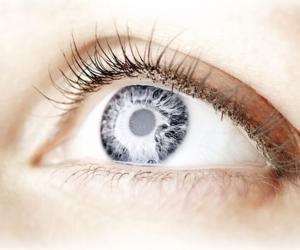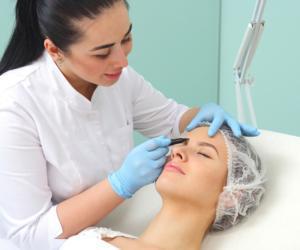What to Expect After Blepharoplasty

Blepharoplasty, in simple terms, means the surgery of the eyelid(s). It is performed on either the lower or the upper eyelid. Sometimes, blepharoplasty is also performed on both eyelids (the lower and the upper one). The two major reasons people opt for eyelid surgery are:
- When one wants to boost their general facial appearance.
- When your eyelids have problems functioning properly.
All over the world, there is a growing number of individuals undergoing the surgical procedure. Many people face the surgeon without a single clue of what to expect after the surgery. The following facts will teach you on what to expect after the surgery, and how to take care of yourself after the surgery. Moreover, you will learn how long the healing process takes and what measures to take for a quick recovery.
What to Expect After the Eyelid Surgery
Most eyelid surgeries take a day. In fact, it is usually performed on an outpatient basis. However, in some special cases, the surgeon may recommend an overnight stay. Whether the patient will stay in the hospital or recuperate at home is up to the surgeon to decide.
One should expect redness and swelling on the incision places. The eyes may tear and become dry excessively. Doctors normally provide an ointment to help alleviate the irritation. Because of the usage of ointment on the patient’s eyes, the patient’s sight may become blurred and hazy. It is expected for one to be highly sensitive to light as they gradually recover.
Puffiness and Swelling
Swelling is an ordinary occurrence after any surgery. This is because, when the body’s tissue is damaged, the body’s protective mechanism responds swiftly by sending white blood cells to repair the damaged tissue. This is what causes puffiness and swelling.
However, more than half of the swelling is likely to wane after 14 days. The rest will disappear after two or three months. Some patients may take up to six to twelve months for the swelling to disappear completely. Though rare, it is possible for swelling to become permanent. Ensure that you attend the entire doctor’s appointment without failing.
How to Take Care of the Eye After Blepharoplasty
The eyelids normally feel tight after a lower and upper blepharoplasty surgery. There may also be soreness on the eyelids. The soreness is treated with painkillers and anesthetics. Use antibiotic cream to treat the incisions and to keep them lubricated for the first seven days after the surgery. You may also consider placing cold wrappings on the incisions as they help to reduce the pain and swelling. To help keep the eyes from drying out, it is important to use eye drops. Reading, wearing contact lenses, and using computers are activities that dry out the eyes; hence, they should be avoided especially for the first seven days after surgery.
Keep your head raised during the first seven days after the surgery as it helps to reduce swelling and bruising. Expect the doctor to remove the stitches between the second and the seventh day after the surgery. On the tenth day following the surgery, most patients feel well enough to resume normal life. Doctors recommend that patients wear dark sunglasses during the first couple of weeks following the procedure. Dark sunglasses protect the eyes from the adverse effects of the weather; this includes wind and direct sunlight that causes irritation on the eyes. Because the eyes tire out easily, especially before the patient heals completely, it is essential that patients take regular siesta.
You should avoid bending, crying, lifting, or any sporting activity. This is because such activities increase blood supply to the eyes. Moreover, patients should consult the doctor on when to resume these activities.
How Long Does It Take to Recuperate?
It takes several weeks for a quick recovery after a blepharoplasty. Normally, stitches are removed 2 to 3 days after the surgical procedure. It is ordinary for the eyes to be red and swollen, especially after the stitches are removed, in the first week. The swelling and redness will dwindle with time. At this particular time, patients should ensure that the eyes get plenty of rest.
To recover quickly, patients should ensure that any exertion that increases blood supply to the eyelids is avoided at all cost. After ten days, patents may get back to work.
In some special cases, the healing process may take longer than anticipated. When this happens, patients are depressed and frustrated due to their swollen and bruised appearance. However, after several weeks, their eyes will appear youthful and more alert. According to patients who have undergone blepharoplasty, this is the most satisfying feeling after the vexing surgery.
What Measures Should Be Taken for a Quick Recovery at Home?
- Adequate sleep is vital for a quick recovery. While sleeping, always keep your head elevated with pillows.
- Do not drive without first getting the green light from your doctor.
- Avoid watching TV or using the computer for many hours, especially on the first few days after surgery.
- Avoid wearing contact lenses for 14 days after the surgery. It is also important to consult your doctor on when you can start wearing them again.
- Avoid lotions and face creams. You may resume wearing makeup after 14 days.
- You may wash your hair within 24 hours following the surgery. However, ensure that no soap, shampoo, or water makes contact with your eyes.
- Do not put any undue pressure on the eyes for 7 days after surgery. Even rubbing your eyes must be avoided.
Medications
Always consult your doctor before taking any medicines. Make sure that you clearly understand the doctor’s recommendations. Strictly adhere to the doctor’s guidance and recommendations on the usage of drugs. If you will be using eye drops and antibiotic cream, make sure you follow what the doctor recommends. When using eye drops:
- Move your head backwards and lower the eyelid with one finger.
- Squirt or drop the medicine on the lower lid.
- Let the cream or the drops move around while your eye is closed for 30 to 60 seconds.
- Keep the ointment dropper tip from touching the eyelashes or any other place.
- You should not touch the tip of the ointment dropper.
When to Seek Medical attention
By observing the care and precaution tips mentioned above and following your doctor’s advice, everything should go just fine. However, call the emergency number (911) or your doctor in case you notice the following:
When to call 911:
- When you develop breathing problems.
- When you notice severe pain on your chest.
- If you begin coughing up blood.
- Loss of consciousness.
When to call your nurse or your doctor:
- If you notice pus coming out of the incision area.
- When you have severe fever.
- When you notice that pain does not lessen even after taking medicines.
- When you notice your sight is deteriorating.
















